
Augustus Bridge Dresden
LED projectors synthesise aesthetics and nature conservation
What a panorama - the ‘Florence on the Elbe’, Dresden, illuminated at night, is probably one of the most photographed motifs in Germany. In the centre: the historic Augustus Bridge, which has been extensively renovated in recent years in keeping with its listed status. Projection technology from WE-EF enabled a lighting concept that reconciles the highest design standards with nature conservation and monument protection.
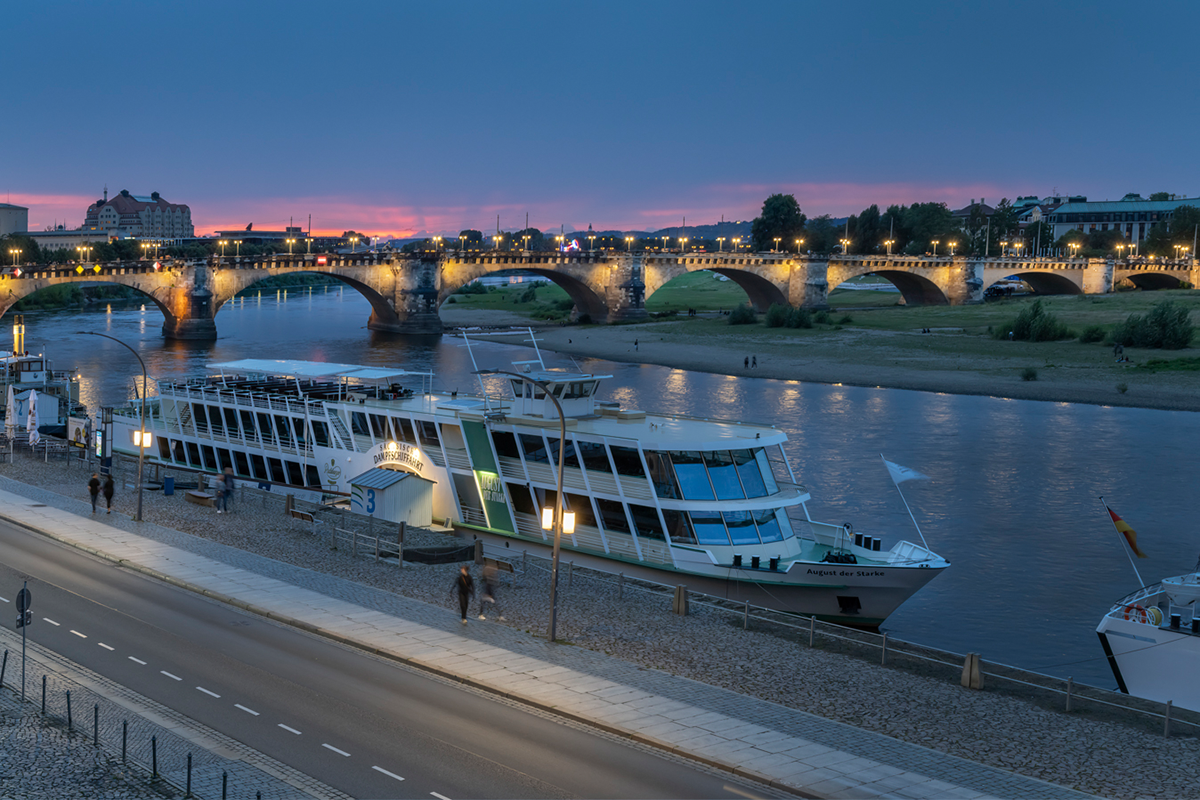
A stone bridge over the Elbe has connected the historic centres of Dresden's Old and New Towns since the Middle Ages. It was demolished and rebuilt twice, each time wider, higher and more magnificent than before. Today's Augustus Bridge was built between 1907 and 1910, designed by engineer Herman Klette and architect Wilhelm Kreis in the style of its baroque predecessor. Since then, war damage, constantly increasing traffic and, most recently, the floods of 2013 have taken their toll on the bridge. After careful surveys and planning, the thorough refurbishment of the listed building began in 2017. Traffic has been flowing on the bridge again since January 2022 - however, as the first car-free bridge in Dresden, it is now reserved for pedestrians, cyclists and the tram. Final work continued in parallel, including the finishing touches to the lighting system. As long envisaged in Dresden's lighting masterplan, the Augustus Bridge has shone in warm-tones in the evening since December 2023, making it a central element of the cityscape at night.
Sculpturally structured through light and shadow
‘The new lighting should make the plasticity and structure of the building perceptible even at night,’ says lighting designer Anke Hanke, describing the lighting concept of her office Hanke + Partner Architekten mbB, Weimar: ’We achieve this through precisely illuminated arched end faces, emphasising the sculpturally designed console stones and by brightening the sides of the pillars.’ What looks so clear and coherent in the result, however, required a lot of patience, creativity and expertise in practice: because it was not only the aesthetic and attractive appearance that counted, the requirements of monument and nature conservation also had to be taken into account in the lighting design.


The enormous amount of work involved in the refurbishment determined the project schedule, in which the planning and installation of the lighting could only be carried out in stages and therefore took around a decade. The banks of the Elbe around the bridge are also a habitat for protected animal species such as the horseshoe bat. In the interests of species protection, it was important to minimise the disruptive effects of the lighting, especially the direct illumination of the water and bank areas or under-illumination of the bridge arches. Samples taken early on in the process showed that conventional spotlights could neither fulfil these requirements nor provide the necessary glare protection for bridge users. As a solution, the planners brought spotlights with gobos into play - and thus WE-EF as one of the leading providers of this technology in the outdoor area.
Precise lighting with customised gobos
Such gobo projectors can project various patterns and images onto the target surface using durable metal and glass stencils known as gobos - free from stray light and light pollution. Initial tests with provisional gobo templates at the Augustus Bridge showed promising results back in 2014. However, creating the final gobos required some effort, as the irregular shape of the bridge meant that the exact gobo contour had to be worked out individually for each position of the 34 LED projectors: To do this, the planners first projected a measurement pattern onto the respective bridge segment and photographed it from the same perspective. Based on these digital photos, a specialised service provider created motif templates and, finally, the gobos with contours for sharp light outlines on the arch edge and parapet as well as with gradients for soft transitions on pillars.
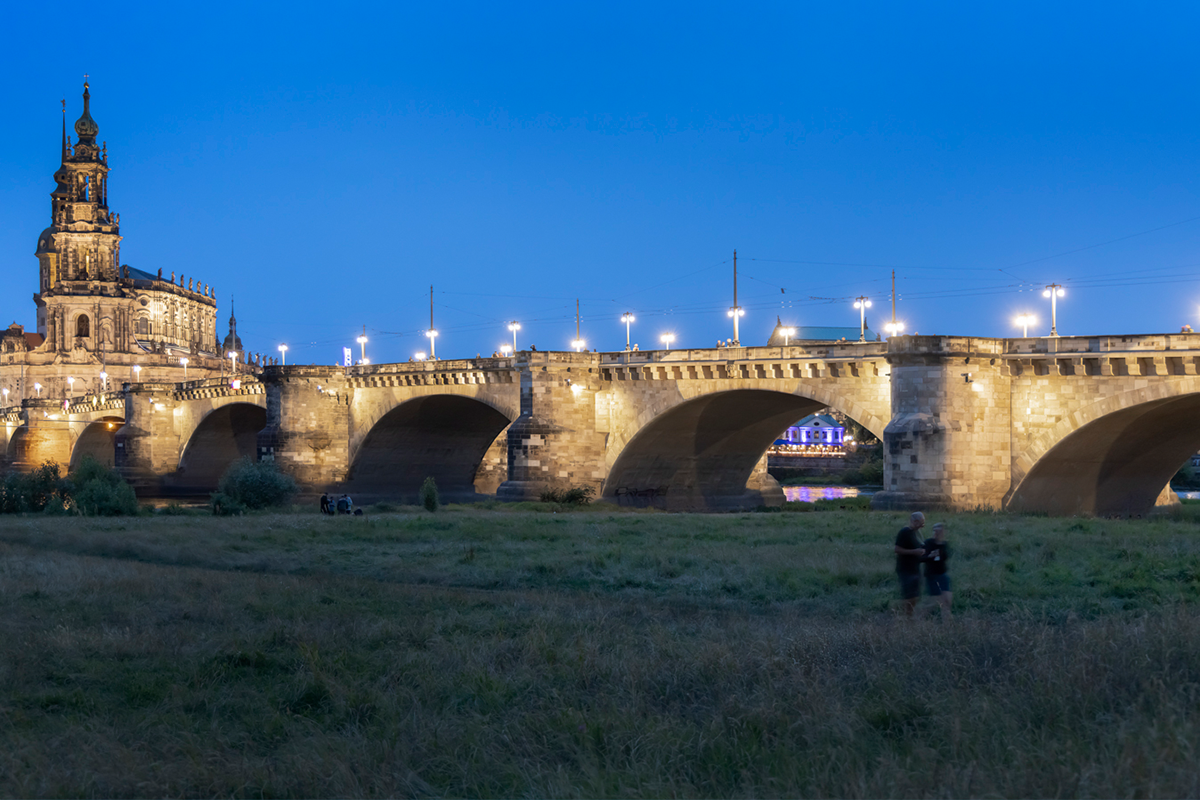
The gobo projectors of the FLC series from WE-EF have the special feature that they are just as robust and durable as their tried-and-tested siblings with conventional optics, even with the high-quality projection optics that unmistakably protrude from the floodlight in their protective tube. On the Augustus Bridge, two FLC220 projectors are mounted opposite each other on a steel bracket on each bridge arch. Positioned approximately at the apex of the arches, they illuminate each bridge segment with sharp edges and evenly from both sides. For the higher arches, additional FLC 220 spotlights with symmetric wide-beam characteristics are used to illuminate the arch end faces at close range. The spotlights and projectors are all equipped with warm colored LED modules (3000K) - in keeping with the overall appearance of the old town embankment and the original beige colour of the Elbe sandstone of the bridge cladding. Their dimmable control gear is integrated into a lighting control system via a DALI interface. This enabled the planners to carry out the final fine adjustment of the illuminance levels from the viewer's perspective.
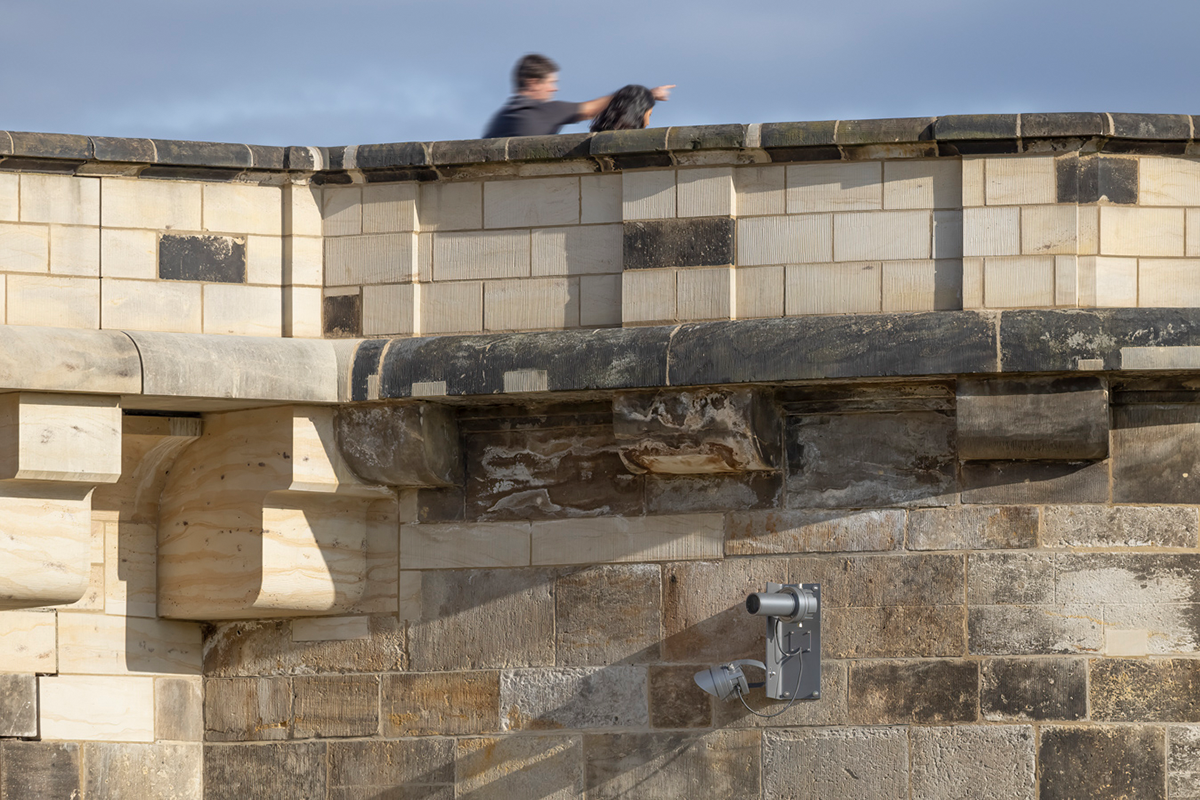
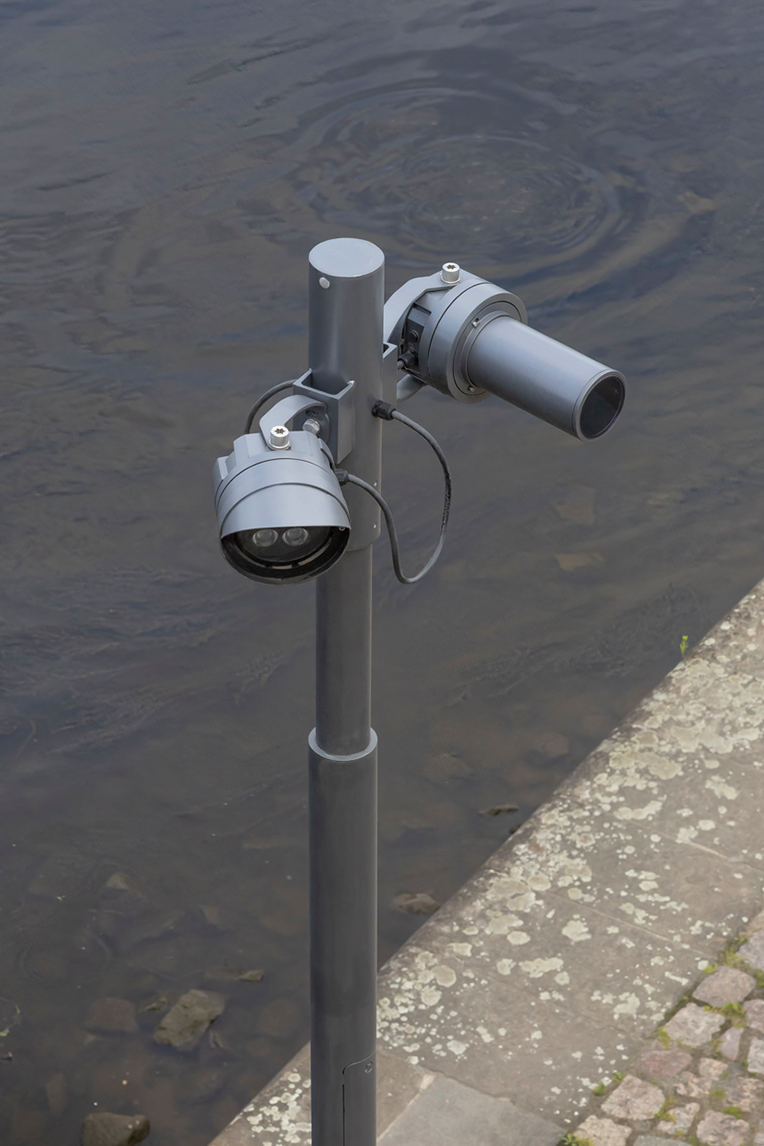
Respect for the night has priority
Due to its prominence as a cultural monument that characterises the cityscape, Dresden's Augustus Bridge clearly stands out as a lighting project. However, the high priority of nature conservation alongside aspects of urban planning and monument protection is likely to be the norm in future. Lighting solutions that treat the night and its nature with respect are therefore becoming increasingly important. The use of gobo projectors to minimise stray light and light pollution is just one of the technologies with which WE-EF supports this development towards a more conscious use of light under the collective term ‘Night Sensitive Lighting’. A successful result like the one at Augustus Bridge is just as pleasing for the people of Dresden and their visitors as it is for the horseshoe bats.
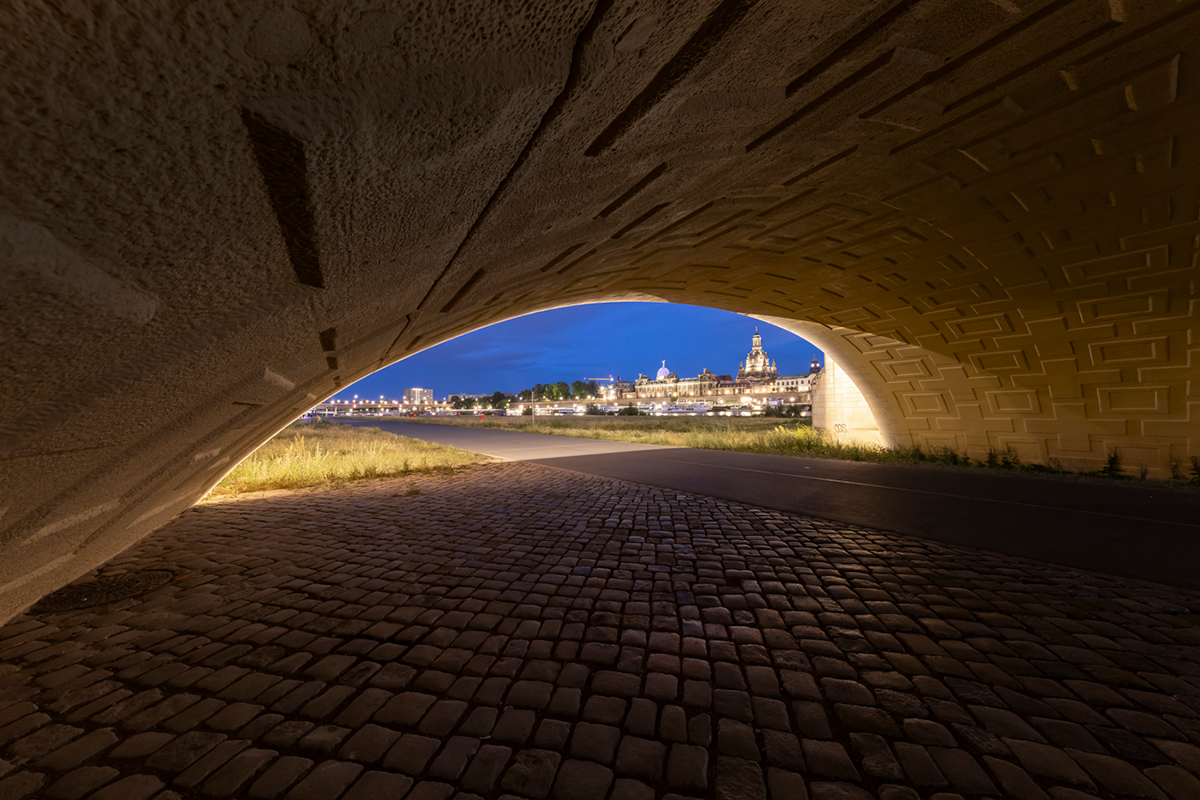
Credits
Project: Restoration of the Augustus Bridge over the Elbe and the neighbouring engineering structures and flood damage repair in Dresden in accordance with the preservation order Client: City of Dresden, Roads and Civil Engineering Department General planning and site management: IGS Ingenieure GmbH & Co. KG, Weimar Lighting design: Hanke + Partner Architekten mbB, Weimar Electrical planning and construction supervision of technical equipment: IBHS Ingenieurbüro Hahn GmbH, Pirna Execution of bridge construction: Hentschke Bau GmbH, Bautzen Execution of technical equipment: Elektroinstallation Martin GmbH, Dresden Planning period (preliminary planning to award of contract): 2013 - 2017 Execution period: 2017 - 2023 Photos: Frieder Blickle for WE-EF

Loading related products...